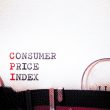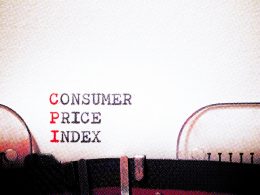by Will Keenan & William Smead, Smead Capital Management
Dear fellow investors,
At Smead Capital Management, our low portfolio turnover approach often results in prolonged periods of inactivity. Rest assured, however, that a great deal happens underneath the surface each day as our investment team continues its never-ending mission to continuously improve our portfolios and avoid stock market failure on behalf of our investors. A key part of these efforts includes constantly looking for new investment opportunities, and comparing these opportunities to businesses we already own. We agree with the late, great Julian Robertson, who posited that each day we choose to hold a stock is an implicit decision to continue to buy it. With this in mind, we will lay out why we continue to own Target instead of a former holding and what we have labeled “the Mother Theresa of common stocks,” Costco.
Great investors as varied as Benjamin Graham to Bill Miller shared the maxim: compare, compare, compare. While they are both retailers, Costco is widely considered to be a third certainty in life following death and taxes, while Target, after a brief resurgence during the pandemic, has once again been left out in the cold by Mr. Market. A closer analysis of these two businesses, however, reveals that they share more in common than a consensus opinion would suggest.
First, the best retailers focus on delighting their customers – at Costco, they are members, and at Target, they are guests. Decades of customer satisfaction, in turn, engender deep customer loyalty to an almost cult-like devotion. Both companies cultivated these large followings over long-periods of time by always focusing on the long pull and a sustainable approach not based on flavor-of-the-month. Instead, they share a commitment to take care of customers, employees, and suppliers with the end goal of maximizing per share value in a “shared economies” strategy. Target, like Costco, has been reinvesting in low prices to take care of its customers in the long term at the expense of short-term margins, demonstrating its “capacity to suffer.”
As a former Seattle-based firm, we are aware of Costco’s history of customer loyalty, but conversely, we believe Target’s ubiquity causes its unique competitive advantages to be overlooked in comparison by many investors. Many of the qualities that have crowned Costco as a market darling appear in Target’s underlying business model as well.
Let us get the most glaring difference out of the way to start. As a warehouse club, Costco can only be enjoyed by paying members. As a result of this literal paywall and its utilitarian design, the stores are solely frequented by customers who are there on a mission and have paid for that privilege. As a result, Costco enjoys higher average basket sizes, and near-zero shrinkage (read: theft).
Target, on the other hand, is open and accessible to everyone: from grandparents to their TikTok star grandchildren. In fact, Target has more followers than any other retailer on the short-form video social media platform. Target’s Circle Rewards membership program has over 100M members – albeit unpaid – but Target uses this scale to create a similarly value-accretive flywheel for customer delight. Members consent to share their shopping data, which is in turn monetized by the company to help match advertisers with customers in a seamless omnichannel shopping experience that transcends generations – much to the chagrin of its competitors in Seattle and Bentonville.
For those Target customers who want an enhanced experience more closely resembling an Amazon Prime or Costco membership, the company recently launched Target 360 for $49 per year. Over time, we believe this program could reach a similar membership scale as its aforementioned counterparts.
Like their established and emerging membership programs, both companies have enormous private label businesses, but have attacked this high-margin strategy in distinctly different manners. Costco’s Kirkland brand is marketed under a single banner, while Target’s similar scale affords its ability to maintain over fifty private label brands, which are constantly retired and introduced to cater to shifting consumer tastes.
Kirkland’s evergreen branding signals to the consumer its “affordable quality” appeal, while Target’s house of brands can signal everything from “affordable quality” to “cheap chic.” In total, Target’s brand portfolio tops $30B in sales, accounting for 1/3rd of revenues and an even higher portion of gross profits. With its robust brand portfolio, its enviable real estate footprint, and leading scale in its grocery and emerging eCommerce business, we see Target more closely resembling a consumer-focused conglomerate as opposed to a legacy retailer and believe it should be priced accordingly.
Like the savvy consumers we study, we, too, at Smead Capital Management are price sensitive, appreciate quality, and love a good bargain. While both Target and Costco are undeniably good businesses, we feel much more comfortable handicapping a broad range of future outcomes at 14x earnings as opposed to 51x earnings. In our view, Mr. Market is unwilling to fairly appraise a business currently recovering from a pandemic hangover and emerging into its fourth brand reinvention. At current levels, we see an excellent opportunity to own, at the very least, an above-average and resilient enterprise in Target with an ample margin of safety.
As you can see in the chart above, there is a great divide between what people are willing to pay to buy Target’s future success, compared to what they’re willing to pay for Costco’s success.
Fear stock market failure,

The information contained in this missive represents Smead Capital Management’s opinions, and should not be construed as personalized or individualized investment advice and are subject to change. Past performance is no guarantee of future results. Will Keenan, Analyst, and Bill Smead, CIO wrote this article. It should not be assumed that investing in any securities mentioned above will or will not be profitable. Portfolio composition is subject to change at any time and references to specific securities, industries and sectors in this letter are not recommendations to purchase or sell any particular security. Current and future portfolio holdings are subject to risk. In preparing this document, SCM has relied upon and assumed, without independent verification, the accuracy and completeness of all information available from public sources. A list of all recommendations made by Smead Capital Management within the past twelve-month period is available upon request.
©2024 Smead Capital Management, Inc. All rights reserved.
This Missive and others are available at www.smeadcap.com.
















